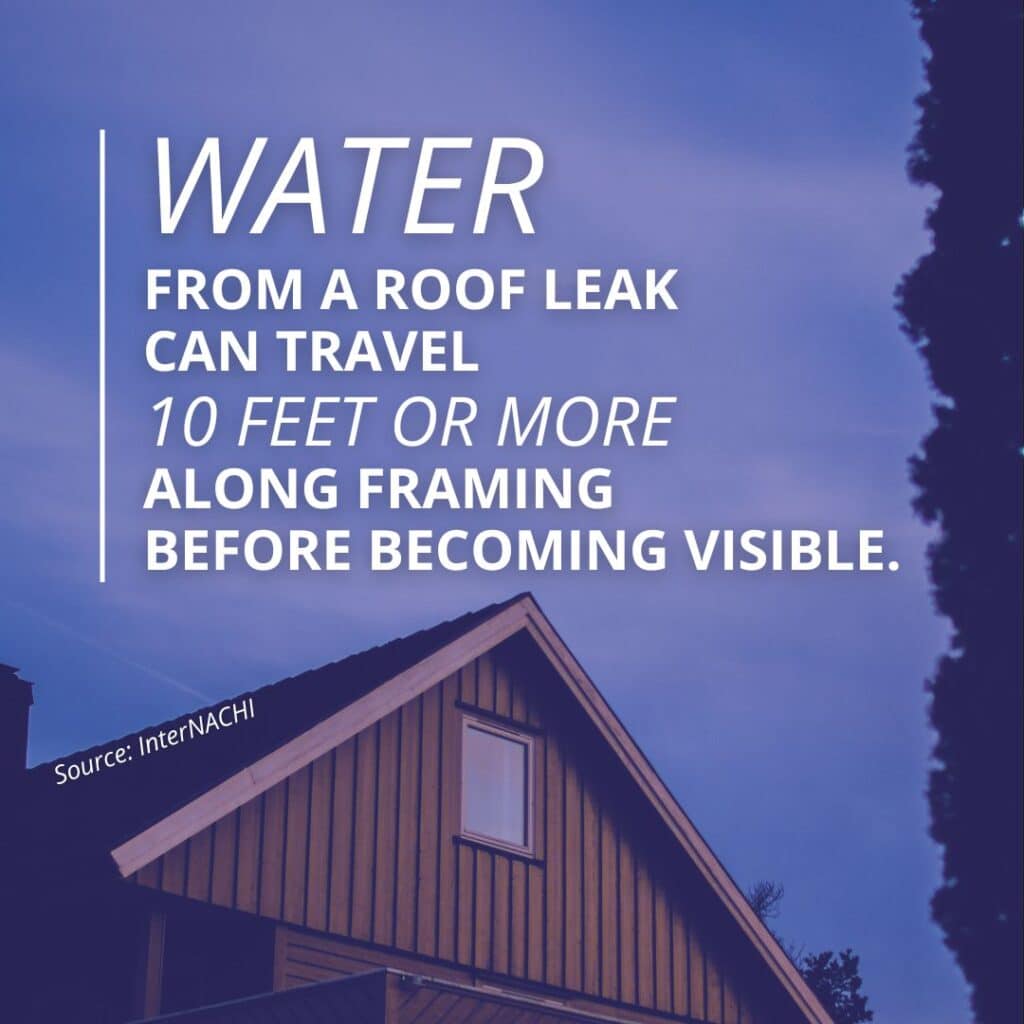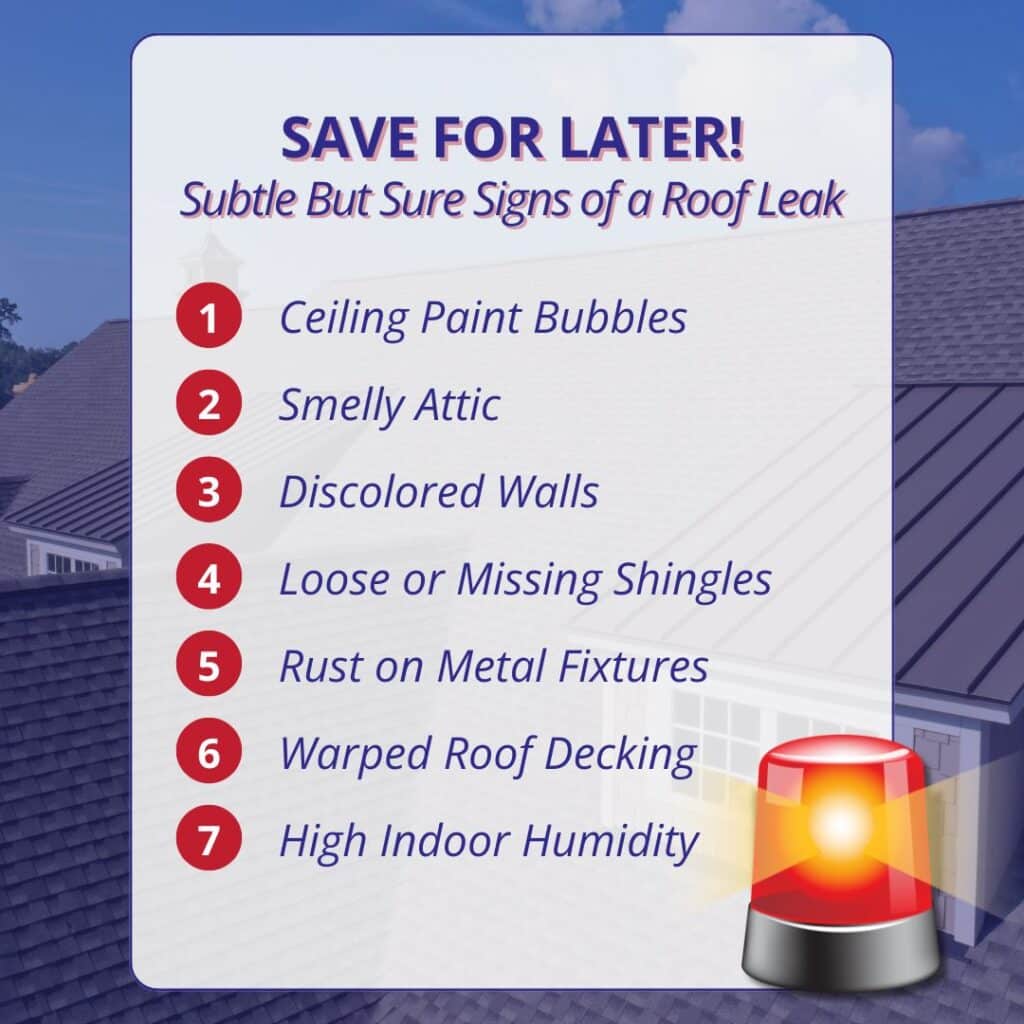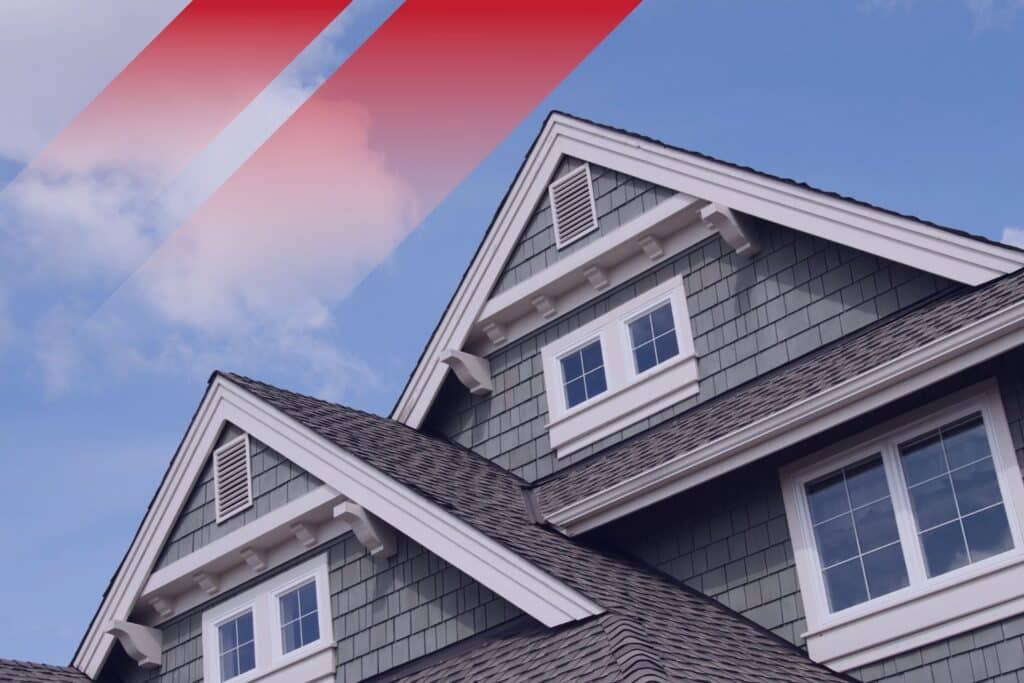Not every roof leak is easy to spot. While most people think of water dripping from the ceiling or stains on the drywall, the real damage often starts long before those signs appear. Hidden roof leaks can quietly cause major problems behind walls, in attics, and inside ceilings. By the time you notice something’s off, mold may have started to grow or structural materials may already be weakening.
As professional home inspectors, we’ve seen how unnoticed leaks turn into costly repairs. That’s why it’s so important to catch them early. Below are seven subtle signs of a hidden roof leak and what to do if you see one in your home.
1. Ceiling Paint Disturbances
If your ceiling paint is bubbling, cracking, or peeling, especially in spots near vents, pipes, or rooflines, it could be a sign of moisture buildup. Water may be slowly soaking into the drywall from above.
This is one of the first visual clues homeowners overlook. People often think it’s just old paint, but if it appears suddenly or after a storm, it’s worth checking further.

2. Smelly Attic
Even if you don’t see visible signs of a leak, your nose might pick up on it first. A musty, damp smell in the attic can mean water is getting in and soaking insulation or wooden framing.
This moisture doesn’t always show up right away, especially if it’s behind stored boxes or tucked into dark corners. If your attic smells off or unusually humid, take a closer look.
3. Discolored Spots on Walls
A water stain on the ceiling or upper walls is one of the more recognizable signs. These spots often look like faded rings or brown patches, and they might feel soft to the touch.
Keep in mind that discoloration might appear far from where the leak actually started. According to InterNACHI, water from a roof leak can travel up to 10 feet or more along framing before it becomes visible, making it difficult to trace without a full inspection.
4. Loose or Missing Shingles
You don’t need a ladder to check your shingles. Walk around your home and look up for visible signs of damage—cracked edges, bald spots, curled corners, or pieces missing altogether.
Roof shingles are your first line of defense against water intrusion. If any are loose or gone, even just a few, your roof becomes vulnerable during the next rainstorm.
5. Rust on Nails or Metal Fixtures
Take a peek inside your attic or crawl space and look at any exposed metal. Rust on nails, flashing, or light fixtures is a sign that water has been there. Even slow drips or humidity buildup can cause this over time.
Rust is especially telling because it sticks around longer than moisture alone. If you’re seeing corroded parts near the roofline, it’s time to investigate further.
6. Warped or Sagging Roof Deck
Your roof deck is the wood surface beneath your shingles. If it becomes saturated with water, it can warp, sag, or buckle. You might notice dips in the shape of your roof from the ground, or feel uneven areas while walking through the attic.
This kind of damage can lead to mold, rot, or a full roof replacement if ignored too long.
7. High Indoor Humidity
If your home feels more humid than usual, and your windows keep fogging up or you’re struggling with musty smells, the source might be above you. Roof leaks often release small amounts of moisture into the attic or HVAC system. That moisture can then move through the entire home.
Look out for condensation on windows, especially in rooms near the attic or top floor.
What Happens If You Ignore a Roof Leak?
Roof leaks don’t fix themselves. Even small ones can cause:
- Mold growth in walls, ceilings, or insulation
- Damage to drywall, baseboards, and flooring
- Electrical issues from soaked wires or junction boxes
- Lower home value due to hidden water damage
- Pest issues, as rodents and insects seek out moist areas
Mold can start to grow within 24 to 48 hours of water exposure. That means even a minor leak deserves your attention right away.

How to Prevent Future Roof Leaks
Being proactive can save you thousands in the long run. Here’s how:
1. Inspect After Every Major Storm: Heavy wind, hail, and falling branches can all damage your roof. Check for obvious signs like missing shingles or debris buildup.
2. Clean Gutters Regularly: Clogged gutters can send water backward onto your roof instead of directing it away. Keep them clear of leaves and debris.
3. Trim Trees Near the Roofline: Overhanging branches scrape shingles and drop debris. In high winds, they can break and puncture the roof.
4. Schedule Routine Roof Inspections: A professional roof inspection every 1–2 years can catch early issues before they turn into leaks. It’s especially useful for older roofs or homes in high-rain areas.
When to Call a Professional
If you’ve spotted one or more of these signs, it’s time to act. A certified inspector can:
- Find the exact source of the leak
- Check for mold, rot, or structural damage
- Recommend reliable local roofing repairs
- Help you decide whether a patch or full repair is needed
At Knockout Inspections, we help homeowners identify roof damage early and avoid expensive surprises down the line. Whether you’re concerned about a recent storm or buying a new home, we’re here to help.
Conclusion
A roof leak can start quietly, but they never stay small for long. From a musty attic to a single cracked shingle, the early signs are often easy to miss unless you know what to look for.
By learning the subtle clues and getting timely inspections, you can stay ahead of the damage and protect your home. Call Knockout Inspections today, and our team will do the hard part for you.

